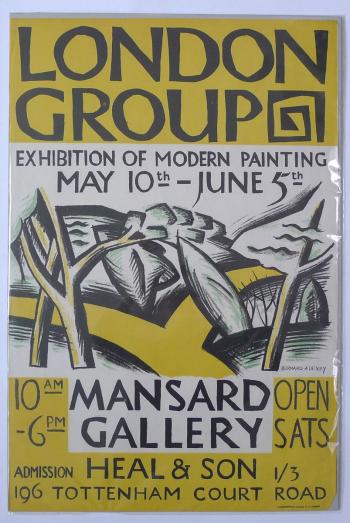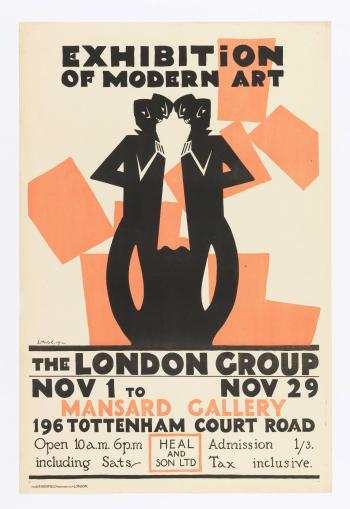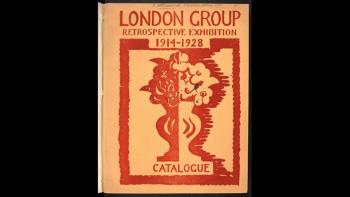London Group
Founded in 1913 the London Group was a fusion of the many groups that had sprung up in the Tottenham Court Road area of London in opposition to the conservative views of the NEAC. The feeling within the groups – namely the Camden Town Group, the Fitzroy Street Group, the Vorticist Group and the Cumberland Market Group – was that individually they were too small and had insufficient funds to be viable. So, at a meeting presided over by Walter Sickert held at Fitzroy Street in November 1913 it was agreed they should come together as a more unified society to be called the London Group. Harold Gilman was elected as the Group's first President and the first exhibition was held at the Goupil Gallery in March 1914. It was to unite all the disparate personalities of the contemporary art scene and was for many years the most modern exhibiting society in Britain.
It numbered many of the best-known British artists among its members and exhibited paintings and sculptures which today are universally recognized as icons of their period. However, such diversity of talents within the Group soon led to conflict and tension, these being exacerbated by the uncertainty created by the outbreak of World War I. But, by 1916 these differences had been largely resolved. By the 1920’s the dominant influences emerged as Roger Fry and his Bloomsbury associates Vanessa Bell and Duncan Grant. Under Fry, the direction of the Group changed considerably – as it was to do many times in its history – but its founding policy of providing support for progressive art was always strongly adhered to, and the modern movement was always well represented within its membership. This included artists such as David Bomberg and Paul Nash in the 1920’s, and later Ardizzone and Hockney. The Group continued to exhibit until well after the end of World War II using the Mall Galleries as its main venue. A Jubilee Exhibition was held at the Tate Gallery in 1964.
Get Unlimited Access from just £5




